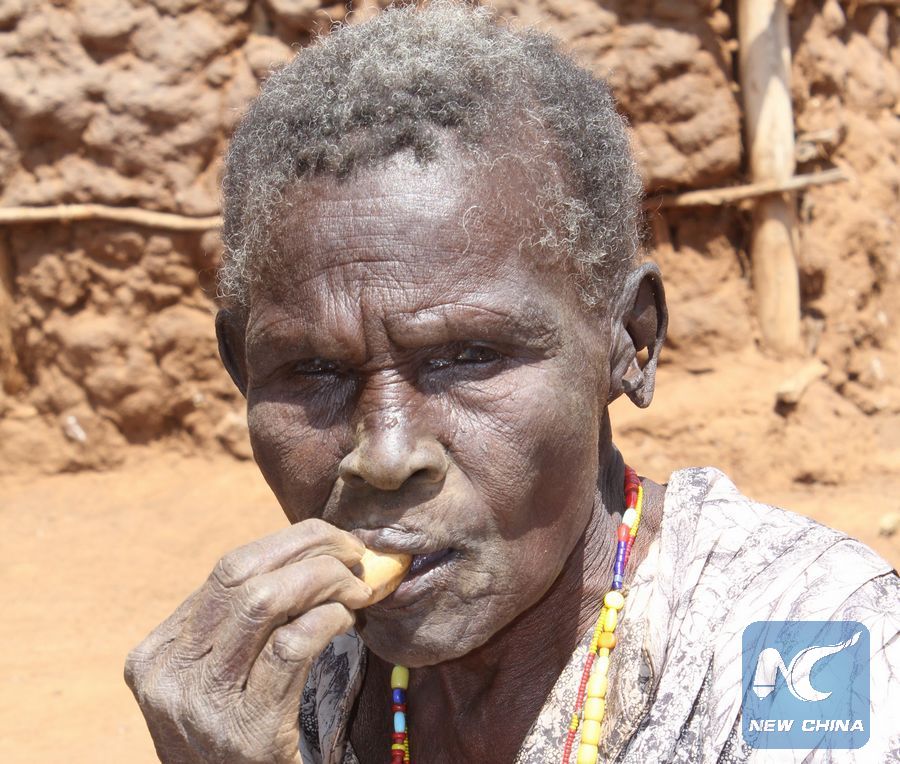
File photo taken on March 12, 2015 shows an old woman is seen outside her mud-house in drought-hit Baringo, northwest Kenya. (Xinhua)
NAIROBI, Feb. 14 (Xinhua) -- The UN Food and Agriculture Organization (FAO) warned on Tuesday that severe drought is pushing up food prices sharply in East Africa.
According to the FAO's latest Food Price Monitoring and Analysis Bulleting (FPMA), soaring cost of basic staples is an extra challenge for pastoralists as livestock prices fall.
"Drought throughout East Africa has sharply curbed harvests and pushed the prices of cereals and other staple foods to unusually high levels, posing a heavy burden to households and special risks for pastoralists in the region," the FAO said.
The UN agency said insufficient rainfall in most areas of the sub-region has put enormous strain on livestock and their keepers.
It said poor livestock body conditions due to pasture and water shortages and forcible culls mean animals command lower prices, leaving pastoralists with even less income to purchase basic foodstuffs.
Local prices of maize, sorghum and other cereals are near or at record levels in swathes of Ethiopia, Kenya, Somalia, South Sudan, Uganda and the Tanzania, according to the report.
Poor rainfall in recent months has dented farm output in the sub-region, where food stocks were already depleted by the strong El Nino phenomenon that ended only last year
According to the FAO, Somalia's maize and sorghum harvests are estimated to be 75 percent down from their usual level, and some 6.2 million people, more than half of the country's total population, now face acute food insecurity with the majority of those most affected living in rural areas.
"In Kenya, where eastern and coastal lowlands as well as some western areas of the Rift Valley all suffered below-average rainfall, maize prices are up by around 30 percent, with the increase somewhat contained somewhat thanks to sustained imports from Uganda," the FAO said.
The report said beans now cost 40 percent more in Kenya than a year earlier, while in Uganda, maize prices are now up to 75 percent higher than a year earlier.
Prices of maize increased by 23 percent in January in Mogadishu, capital of Somalia, and in key market towns of central and southern Somalia, coarse grain prices in January have doubled from a year earlier.
In South Sudan, food prices are now two to four times above their levels a year earlier, exacerbated by ongoing insecurity and the significant depreciation of the local currency.
"With an earlier than usual depletion of household stocks during the coming lean season and preliminary weather forecasts raising concerns for the performance of the next rainy season, prices are likely to further escalate in the coming months," it said.
The report said shortages of pasture and water caused livestock deaths and reduced their body mass, prompting herders to sell animals while they can, which is also occurring in drought-wracked southern Ethiopia.
"This also pushes up the prices of milk, which is, for instance, up 40 percent on the year in Somalia's Gedo region," it said.

